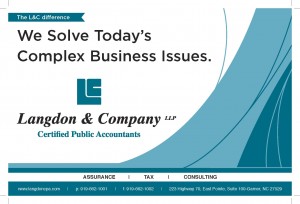Premium Tax Credit Reporting
by Kendall Tyson
 Beginning in 2014, individuals and families with low or moderate income could purchase health insurance through the Health Insurance Marketplace, also known as the Exchange. The premium tax credit is an advanceable, refundable tax credit designed to help those individuals and families. The credit could be paid in advance to insurance companies to lower the monthly premiums or the credit could be claimed with the individual tax return. If the credit was paid in advance, individuals must reconcile the amount paid in advance with the actual credit computed on the individual’s tax return.
Beginning in 2014, individuals and families with low or moderate income could purchase health insurance through the Health Insurance Marketplace, also known as the Exchange. The premium tax credit is an advanceable, refundable tax credit designed to help those individuals and families. The credit could be paid in advance to insurance companies to lower the monthly premiums or the credit could be claimed with the individual tax return. If the credit was paid in advance, individuals must reconcile the amount paid in advance with the actual credit computed on the individual’s tax return.
Reporting and Claiming:
Will I have to file a federal income tax return to get the premium tax credit?
For any tax year, if you receive advance credit payments in any amount or if you plan to claim the premium tax credit, you must file a Form 8962, Premium Tax Credit (PTC) and attach it to your federal income tax return for that year. If you receive any advance credit payments, you will use your return to reconcile the difference between the advance credit payments made on your behalf and the actual amount of the credit that you may claim. This filing requirement applies whether or not you would otherwise be required to file a return. If you are married and you file your tax return using the filing status Married Filing Separately, you will not be eligible for the premium tax credit unless you meet the criteria in Notice 2014-23, which allows certain victims of domestic abuse to claim the premium tax credit using the Married Filing Separately filing status for the 2014 calendar year.
Will I be eligible for the premium tax credit if I’m married but I file my tax return using the filing status Married Filing Separately?
If you are married and you file your tax return using the filing status Married Filing Separately, you will not be eligible for the premium tax credit unless you meet the criteria in section 1.36B-2T(b)(2) of the Temporary Income Tax Regulations, which allows certain victims of domestic abuse and spousal abandonment to claim the premium tax credit using the Married Filing Separately filing status. Taxpayers may claim this relief from the joint filing requirement for no more than three consecutive years.
Note: Generally, a married taxpayer who lives apart from his or her spouse for the last six months of the taxable year is considered unmarried if he or she files a separate return, maintains as the taxpayer’s home a household that is also the main home of a dependent child for more than half the year, and furnishes over half the cost of the household during the taxable year.
For purposes of the relief from the joint filing requirement for certain victims of domestic abuse and spousal abandonment, how are domestic abuse and spousal abandonment defined?
Domestic abuse includes physical, psychological, sexual, or emotional abuse, including efforts to control, isolate, humiliate, and intimidate, or to undermine the victim’s ability to reason independently. All the facts and circumstances are considered in determining whether an individual is abused, including the effects of alcohol or drug abuse by the victim’s spouse. Depending on the facts and circumstances, abuse of the victim’s child or other family member living in the household may constitute abuse of the victim.
A taxpayer is a victim of spousal abandonment for a taxable year if, taking into account all facts and circumstances, the taxpayer is unable to locate his or her spouse after reasonable diligence.
If I get insurance through the Marketplace, how will I know what to report on my federal tax return?
If you purchased coverage through the Health Insurance Marketplace you should receive Form 1095-A, Health Insurance Marketplace Statement from your Marketplace by early February. This form provides information you will need when completing Form 8962. If you have questions about the information on Form 1095-A for 2014, or about receiving Form 1095-A for 2014, you should contact your Marketplace directly. The IRS will not be able to answers questions about the information on your Form 1095-A or about missing or lost forms.
Filing electronically is the easiest way to file a complete and accurate tax return. Electronic Filing options include free Volunteer Assistance, IRS Free File, commercial software and professional assistance.
How is the amount of the premium tax credit determined?
The law bases the size of your premium tax credit on a sliding scale. Those who have a lower income get a larger credit to help cover the cost of their insurance. In other words, the higher your income, the lower the amount of your credit.You will figure your credit on Form 8962. You must complete this form to claim the premium tax credit and reconcile any advance credit payments with the premium tax credit you are eligible to claim on your return. Form 1095-A from your Marketplace provides information you will need when completing Form 8962.(see question 14) Filing electronically is the easiest way to file a complete and accurate tax return. Electronic Filing options include free Volunteer Assistance, IRS Free File, commercial software and professional assistance
Additionally, the premium tax credit is a refundable tax credit. This means that if the amount of the credit is more than the amount of your tax liability, you will receive the difference as a refund. If you owe no tax, you can get the full amount of the credit as a refund. However, if you receive advance payments of the credit, you will reconcile the advance payments with the amount of the actual premium tax credit that you calculate on your tax return. If your actual allowable credit on your return is less than your advance credit payments, the difference, subject to certain caps, will be subtracted from your refund or added to your balance due. If your actual allowable credit is more than your advance credit payments, the difference will be added to your refund or subtracted from your balance due.
This excerpt and additional Q&A information on the Premium Tax Credit can be found on the IRS website: http://www.irs.gov/Affordable-Care-Act/Individuals-and-Families/Questions-and-Answers-on-the-Premium-Tax-Credit#.VNO4_QFEocQ.gmail
Kendall Tyson ([email protected]), a Tax Manager at Langdon & Company LLP. She specializes in physician/dentist practices, multi-state and nonprofit returns.






 There is often confusion surrounding who can claim college tax credits and for how much. The two college tax credits are the
There is often confusion surrounding who can claim college tax credits and for how much. The two college tax credits are the 
 list of U.S. persons who may be required to report their foreign bank and financial accounts annually to the United States Treasury include, but is not limited to the following who have a financial interest or signature authority in a foreign account or asset:
list of U.S. persons who may be required to report their foreign bank and financial accounts annually to the United States Treasury include, but is not limited to the following who have a financial interest or signature authority in a foreign account or asset:
 There are several educational tax credits and deductions available, but how and when do they apply? The IRS recently published the article “
There are several educational tax credits and deductions available, but how and when do they apply? The IRS recently published the article “




 0.9% Tax on Wage and Self-employment Income:
0.9% Tax on Wage and Self-employment Income:


 The line between liabilities and equity is also critical in measuring income. So companies began to take advantage of manipulating their debt and equity and therefore manipulating their net income. Neither changes in the values of a company’s outstanding equity instruments or transactions between a company and its owners, affect reported income. Whereas, interest payments and at least some changes in the values of liabilities actually do affect reported income.
The line between liabilities and equity is also critical in measuring income. So companies began to take advantage of manipulating their debt and equity and therefore manipulating their net income. Neither changes in the values of a company’s outstanding equity instruments or transactions between a company and its owners, affect reported income. Whereas, interest payments and at least some changes in the values of liabilities actually do affect reported income.